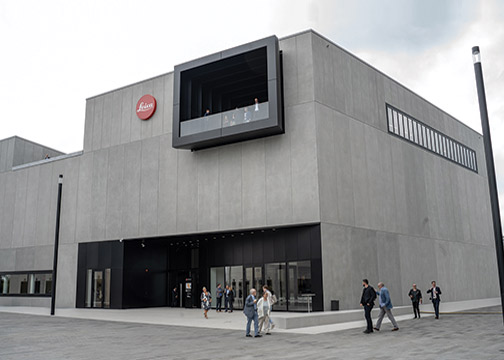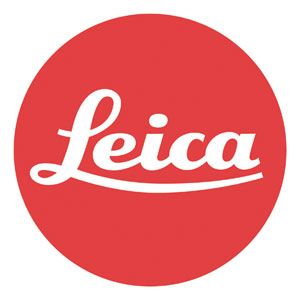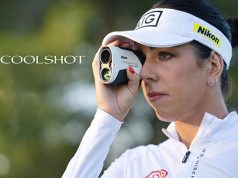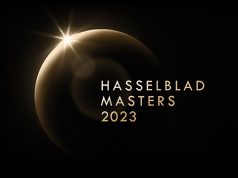
Allendale, NJ—The Ernst Leitz Museum in Leitz-Park Wetzlar, the home of the Leica Camera, is celebrating its reopening. After the completion of extensive alterations, a modern museum of photography reopened its doors to visitors on October 1, 2021. Moreover, the renovations were based on an innovative and interactive museum concept.
With a floor space of nearly 2,000 square feet on the upper floor, the museum offers four newly designed experience zones to inspire visitors to see, get creative with and interactively experience photography.
In addition, an exhibition space on the ground floor will present exhibitions of outstanding photography by internationally acclaimed artists. Until October 24, 2021, visitors can view The Eyes of Humanity, the extremely popular exhibition showing a personal selection from the works of world famous Magnum photographer Steve McCurry from the past 40 years.
Ernst Leitz Museum Reopening
What’s more, as a special highlight to celebrate the reopening, visitors can see a true rarity until the end of the year: an original Leica 0 series camera (No. 105). Notably, Oskar Barnack, the constructor of the Ur-Leica, had taken photographs with this camera.
Leica 0 series cameras, of which only a dozen have survived (and very few in unaltered original condition), are among the most desirable of all collectable cameras. In fact, they have achieved record prices at auctions, most recently at the Leitz Photographica Auction in Vienna in 2018. Leica 0 series camera No. 122 was sold for 2.8 million dollars, including the buyer’s premium. As a result, it is currently the world’s most expensive camera of all time.

In addition, the museum’s four experience zones, which are the work of studio klv (Berlin), are divided into the areas of Seeing and Perception; Technology and History; Photography; as well as special exhibitions. Interactive stations demonstrate optical phenomena and explain the basic principles of photography and the effect of various camera and lens settings in clear and simple terms.
Furthermore, a prominent photographer accompanies each of the themed presentations with an appropriate personal statement and a selected photograph relevant to the topic. These photographers include Steve McCurry, Ralph Gibson, Barbara Klemm, Franziska Stünkel, Alex Webb and Fred Mortagne.
Visitors can also try out all the various photo settings to realize their own creative ideas with the Leica cameras in the stations. Or they can use their smartphones and download all the pictures and selfies they take with the Leitz-Park app for souvenirs.
Seeing and Perception
In the foyer of the Ernst Leitz Museum, the focus is on Seeing and Perception. This exhibit aims to bring visitors to conscious perception of the world around them. Optical phenomena are explained. One of the visual aids is viewable, for example, on the large panoramic window of the museum; the iris of a Leica S camera is enlarged to fifty times its original size and opens and closes when visitors walk up to it. In addition, there are a range of frames with filters, colors and lines that illustrate the principles of photographic composition.
Technology and History
The second zone, Technology and History, is dedicated to the long history of the legendary company; its innovations; craftsmanship; and product milestones. Bronze busts portray the key figures of the Leitz family whose dedication to photography shaped the company. Moreover, Leica’s decisive role in the development of photography is reflected via original, historic items.
In addition, a digitally enhanced window enables visitors to look into the Leica corporate archive. Highlights as well as milestones of the company’s history are displayed. Interactive stations also offer ways to discover the technical features of Leica cameras and lenses; for example, visitors can construct a lens and follow the rays of light passing through it in a real-time simulation. They can also identify and match pairs of Leica cameras by means of an acoustic memory containing their shutters unique sound signatures.
Another station replicates a darkroom. On a large interactive table, visitors can recreate the steps involved in developing analog photographs. They can, for example, develop and enlarge pictures from the Leitz-Park app. 
Photography
In the third experience zone, interactive stations enable visitors to discover more about the basic principles of photography. They can also see how a range of different factors can influence the outcome of the photos they take. Photo settings for various situations invite them to experiment with the Leica cameras installed at the stations or their own phones.
Staged effects such as reflections, highlights and shadows, color moods, motion and wind offer opportunities for capturing unusual photos; they also illustrate the opportunities of creative visualization.
Furthermore, another exhibit is dedicated to the self-portrait. Here, visitors can sit before a mirror, control the color and intensity of the lighting and capture a self-portrait. They can also download those pictures with the Leitz-Park app.
Special Exhibitions
In the fourth zone, visitors will find constantly changing special exhibitions that reflect a diversity of topics from the world of Leica. Currently on view is an exhibition titled Oskar Barnack. It is enriched with materials from the Leica corporate archive as well as pictures captured by the passionate photographer and filmmaker.
The Ernst Leitz Museum in Leitz Park Wetzlar is open Monday to Sunday from 10 a.m. to 6 p.m.





